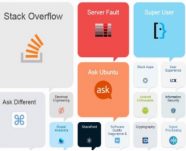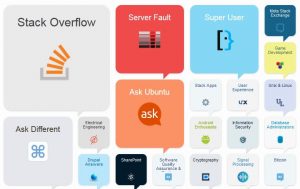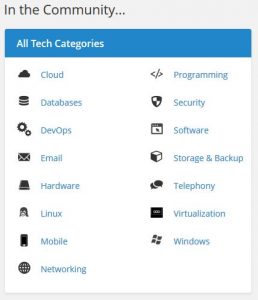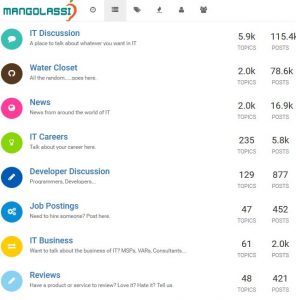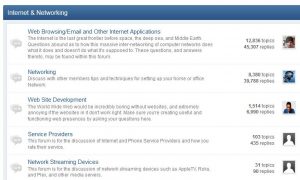Finding troubleshooting help
Why is this thing blinking red? - sites to answer your tech questions
One of the problems with being an accidental sysadmin – or really any kind of sysadmin – is that other people make inaccurate assumptions about what you can do and what you know. “You work for a computer company, don’t you? I can’t get to my files and there’s this popup asking me for something called BitCoin…. Can you just get rid of the popups for me?”
(Sure. Along with your entire operating system, which I am going to have to delete and then reinstall. I hope you’re up to date on your backups. Please tell me you have backups. Oh, you thought I could just make the ransomware magically go away?*)
Sometimes the weird demands come simply because the person doing the asking doesn’t know what is possible in the ever-changing world of IT. But sometimes the requested help is theoretically possible. Maybe. You think.
It’s then a case of hitting the internet to see if a) other people have the problem b) it really is fixable and c) someone can explain how to fix it in enough detail that you aren’t mucking blindly about editing the Windows Registry, for example. (Don’t do that, at least not blindly.)
You could just head straight to the search engine and give your Google-fu a workout. But this column is supposed to be about saving you time, so behold: sites where you can ask your troubleshooting question and have a decent chance of it being answered usefully.
Stack Exchange
“That’s the big one,” according to my highly unscientific survey of exactly one other sysadmin. But he does have decades of experience, and he has a good point. Stack Exchange is enormous. And more valuably, it is organized and focused. Stack Exchange is actually a collection of 163 different Q and A sites, about 50 of which are technology-focused.
The posted questions tend to be specific, which makes them more searchable. Threads are likely to be titled things like “How to make Outlook 2013 do X” rather than “e-mail not working.”
Server Fault and Superuser are probably good starting points for troubleshooting questions, but there are other Stack Exchange sites about particular operating systems and applications that may also suit your particular query. It is quite likely that someone else has already asked your question, so a search might be all you need. If you want to post a new question, you will need to create a free account.
The Spiceworks Community
Spiceworks is a multi-tentacled entity that has appendages in helpdesk software, monitoring, and IT marketing among other things. It also has forums where IT professionals with different backgrounds and levels of experience chat about problems, solutions, pet peeves, horror stories, and all sorts of other topics.
You can view many resources using a simple site search, but to post a question, you need a free user account. Spiceworks funds its free offerings by linking IT companies with prospective customers, so you may get some promotional e-mails once you are officially a Spicehead. Account settings give you some ability to filter the amount of advertising that comes at you, and most Spiceheads seem to find it a manageable trade-off.
One of Spiceworks’ advantages is sheer size; their site claims that it connects “millions” of IT pros, so the chances that someone knows how to solve your problem are pretty good.
Mango Lassi
Mango Lassi is smaller than Spiceworks or Stack Exchange, but size isn’t everything. The community still has a high level of IT knowledge, and the informality of the site may be – for some – an appealing contrast to the slick Spiceworks marketing machine. Socializing with other nerds is definitely a part of this site, with lively discussions of gaming, television, and politics supplementing the technical Q and A.
As with all other examples in this post, you need to create a free account to post a question. You do not need an account to read existing threads.
Bleeping Computer
Bleeping Computer’s main site is mostly focused on malware prevention and removal, but the forums cover a wide range of general tech support topics for multiple operating systems. Also worth mentioning: the site keeps databases of files, startup items, and programs that may appear on Windows computers, which is useful if you are trying to answer the question “is this supposed to be on here or did I just get infected?”
Bleeping Computer also has some intriguing-looking tutorials, but perhaps that should be the subject of another post: places to find good how-tos. Stay tuned.
______________________________________________________________________________________________
* Note: There are decryption tools for files affected by some specific flavors of ransomware. I haven’t tried out any of these tools yet, or read enough reviews to form an opinion of how effective and/or safe they are. The last time an encrypted computer came through our office, we still had to obliterate everything on it and start from scratch.
- Finding troubleshooting help - November 1, 2016
- The Accidental Sysadmin - October 3, 2016
- How to opt out of Shared Endorsements - October 15, 2013
- WD Sentinel DX4000 Part 1 - April 21, 2013
- Making Websites User-Friendly… Or Not - June 11, 2012

